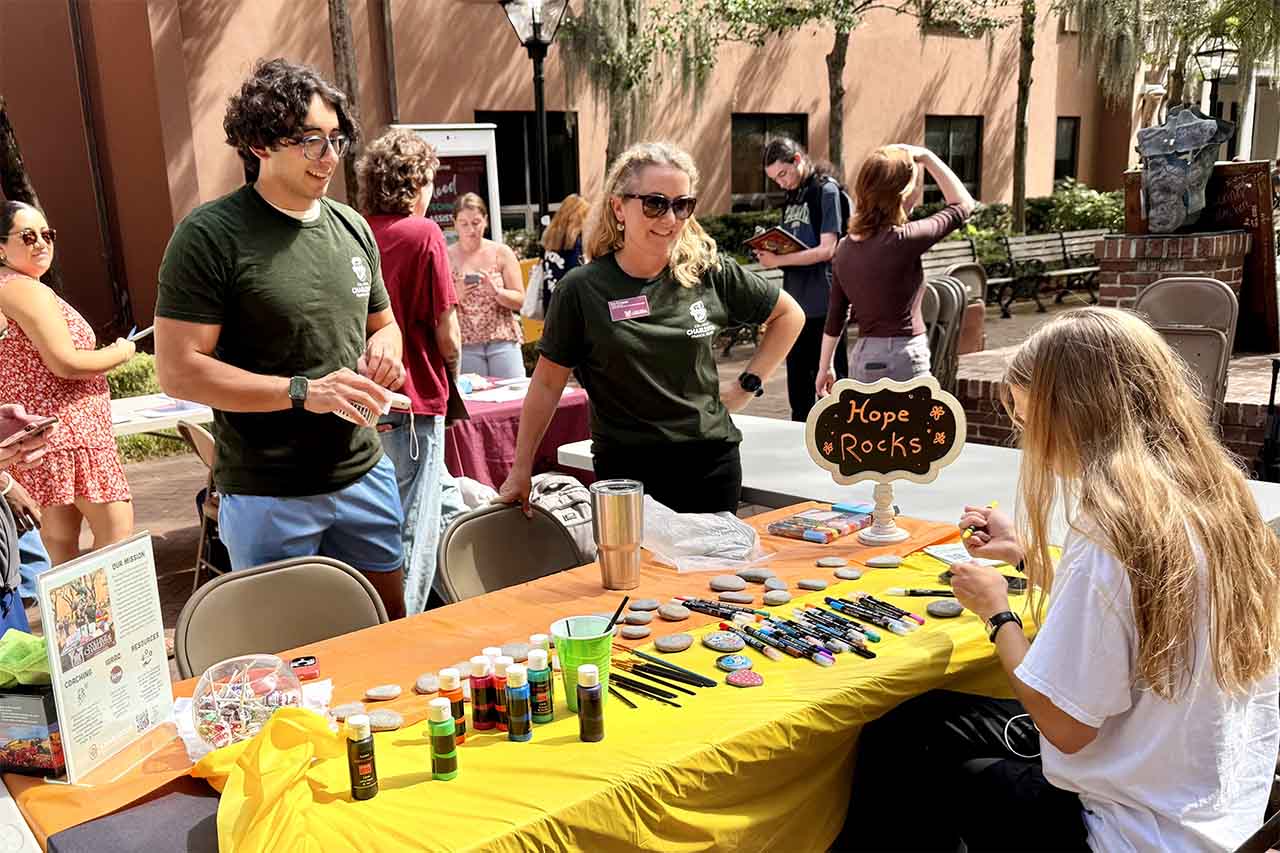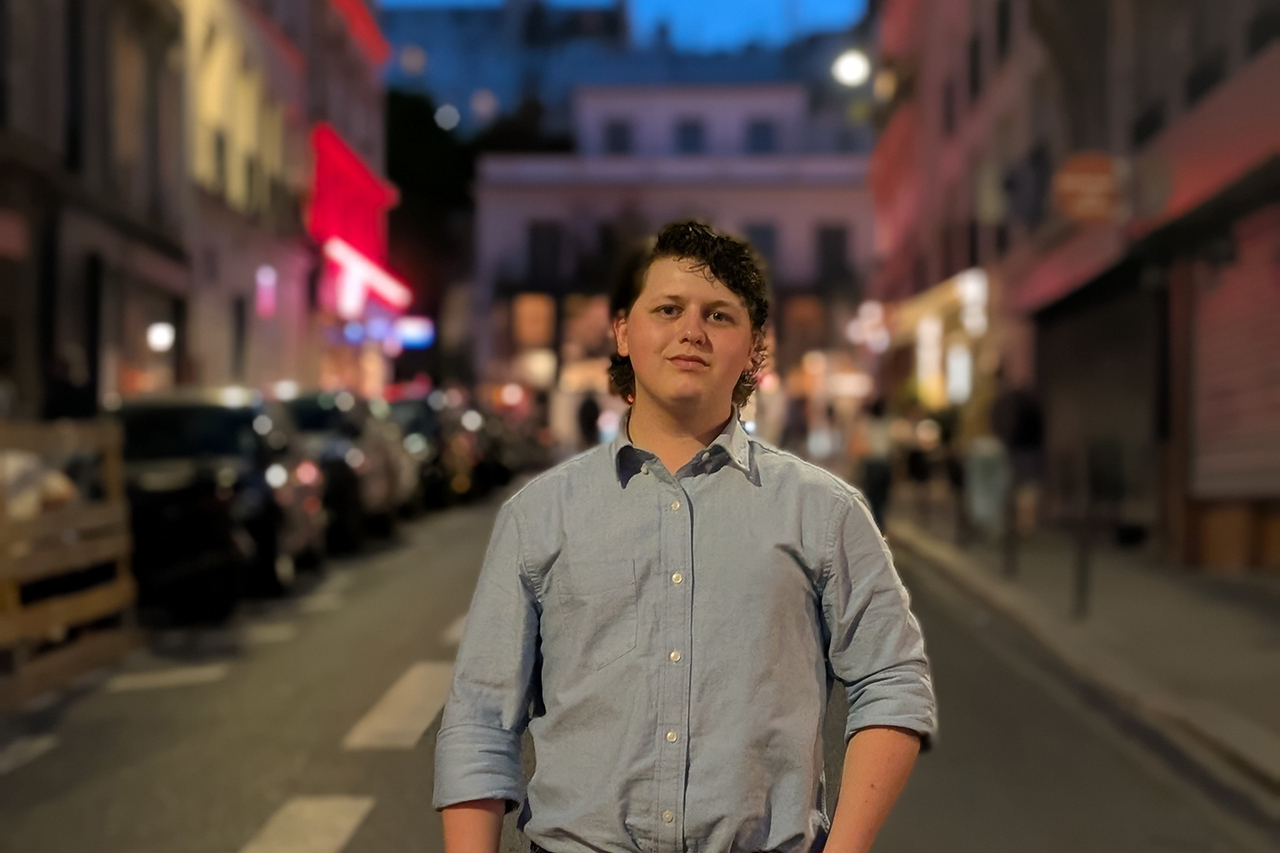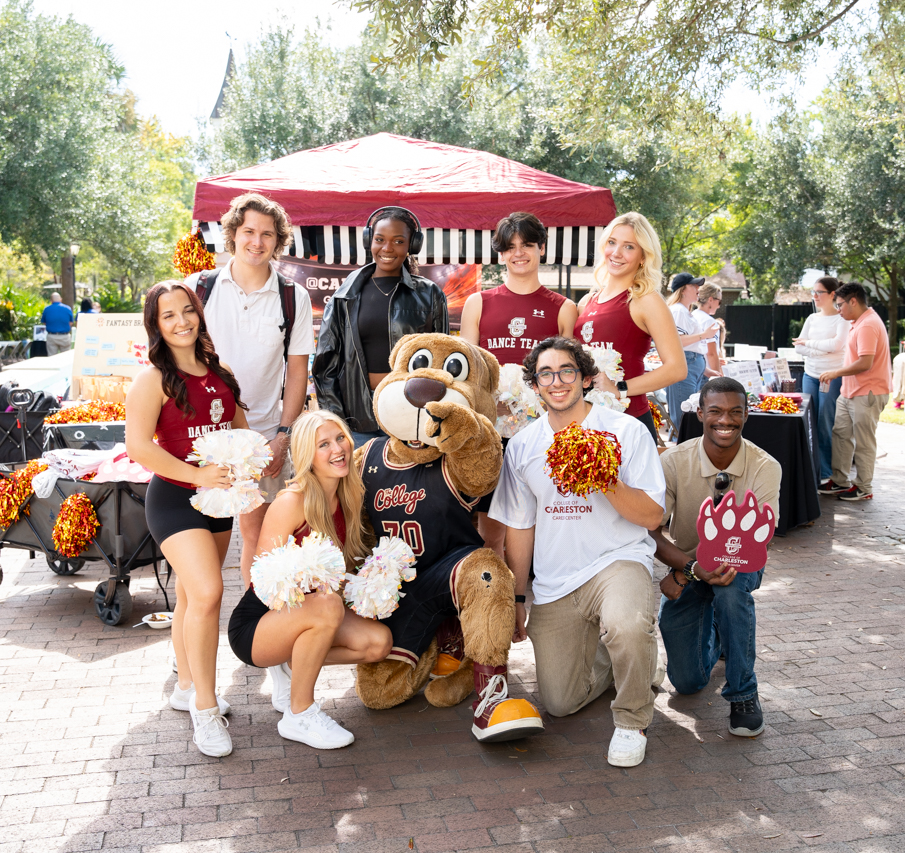Mapping Out a Future: The Search for Submarine Volcanos
The College of Charleston opened the door to Nikolai Sarlo's passion for seafloor mapping. Through mentorship, study abroad and hands-on research with NOAA and the BEAMS program, Sarlo has developed the skills and connections to pursue a promising future in ocean exploration and mapping.
Nikolai Sarlo was in search of the perfect place to study marine biology. Having taken many childhood trips to Charleston, he knew the location was ideal, but what really sealed the deal for the Greer, South Carolina, native was the supportive community and the financial aid he received.
“When going through the application process, CofC really stood out,” says Sarlo, who received the Watson-Brown Foundation Scholarship and the Harry W. Freeman Endowed Scholarship. “They were willing to help financially and gave me individualized attention unlike any other school I was considering.”
Sarlo also knew that the College could make his dream of traveling a reality – which it did when the opportunity arose to study abroad in Scotland for the fall semester of his junior year.
“While in Scotland, I was able to continue with my marine biology and geology studies,” says the biology major, who is double-minoring in geoinformatics and marine geology. “Instead of focusing on the ocean, we focused on creeks, brooks and ponds. It was a very cool experience, and I was fortunate to be there!”
The Map to Passion
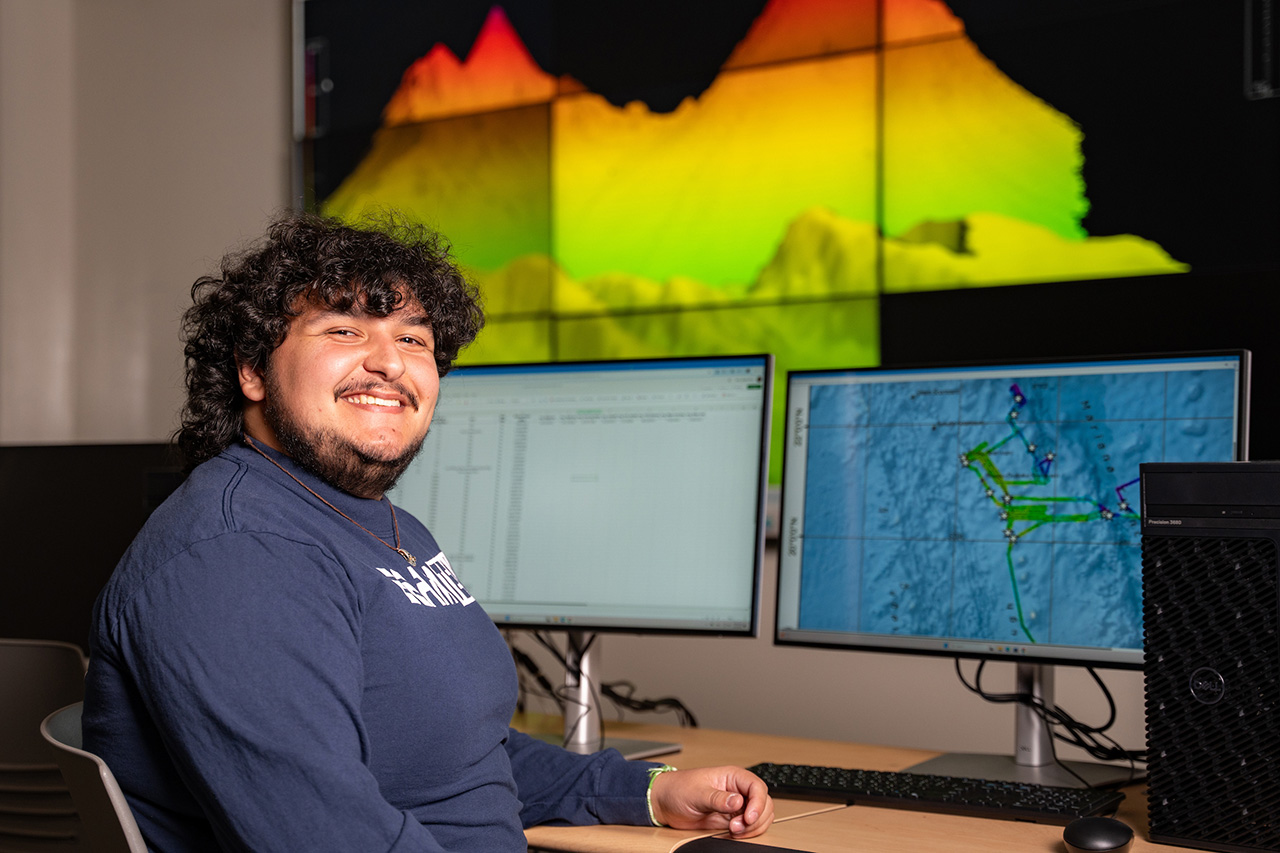
It was upon returning to Charleston that Sarlo discovered his true calling – seafloor mapping.
“I got into seafloor mapping sort of on a whim,” he says, explaining that it all started when his former professor Leslie Sautter, faculty emerita of geology and environmental geosciences, recommended he take a class taught by Lauren Maurizio, an adjunct member in the Department of Geology and Environmental Geosciences. “I was hooked. Not only was it something I enjoyed doing, but the instructor also made the course hundreds of times better for me.”
Sarlo loves the combination of data analysis and creative problem-solving that the field of seafloor mapping involves.
“Seafloor mapping has both a creative and exploratory side that really spoke to me,” he says, “I found myself falling more in love with the concept.”
Research BEAMS
Fortunately, Sarlo found someone who shared his passion for seafloor mapping: Haley Cabaniss ’15, assistant professor of geology and environmental geosciences and director of the College’s Benthic Acoustic Mapping (BEAMS) Program, which offers undergraduate-focused training and research with the mission to develop a strong and qualified workforce of ocean surveyors in support of the academic, research and operational marine communities.
“Students in this program learn about the geology of the seabed, the fundamentals of sonar theory and data processing and pursue an independent research project,” explains Cabaniss.
They also have unique opportunities that put them right at the heart of the field.
“This past March, I was fortunate to attend the Hydrographic Society of America’s US Hydro conference with the BEAMS Program,” says Sarlo, who completed the BEAMS capstone course, Seafloor Research, last spring, earning BEAMS Distinction. “While there, I made fantastic contacts, presented research I had been conducting and got closer to both students and others who are associated with the BEAMS Program.”
Diving Deep
Last summer, through a SURF (Summer Undergraduate Research with Faculty) grant, Sarlo and Cabaniss paired up to expand a submarine volcano database and determine traits that help identify which ones pose a threat and which do not.
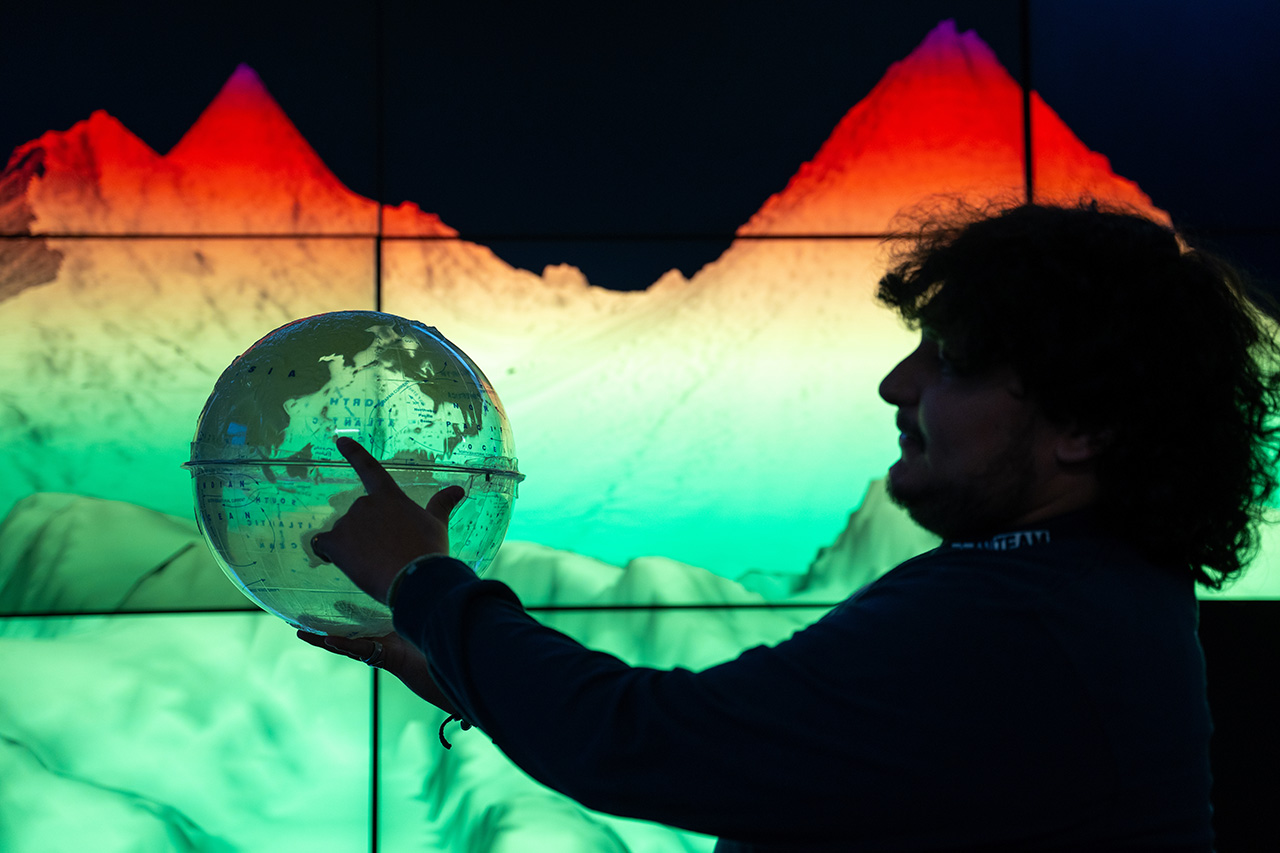
“Nikolai has a passion for maps that is contagious,” says Cabaniss. “This – paired with his curiosity about submarine environments and his desire to engage in science that benefits society – makes him the perfect student to take on this work.”
Sarlo is also working with Norman Levine, professor of geology and director of Santee Cooper GIS Laboratory and Lowcountry Hazards Center, to revise and enter data to help with the Risk, Impacts, & Strategies for Coastal Communities Analysis for Rhode Island, Delaware and South Carolina for Santee Cooper GIS and Remote Sensing Laboratory.
“You can tell which volcano is dangerous based on its shape and depth,” says Sarlo, whose summer work involved significant mapping and comparison with an existing satellite survey and revealed >43,000 submarine volcanoes. “It takes us hours and is a very tedious process to go through each one.”
For Sarlo, the discoveries are worth the effort. Submarine volcanoes can be incredibly hazardous and capable of generating tsunamis, damaging underwater infrastructure and disrupting shipping routes. Determining the eruption and hazards of submarine volcanoes helps focus monitoring efforts on the most dangerous volcanoes, increasing our ability to predict and mitigate the impacts of their eruption.
Hop Aboard!
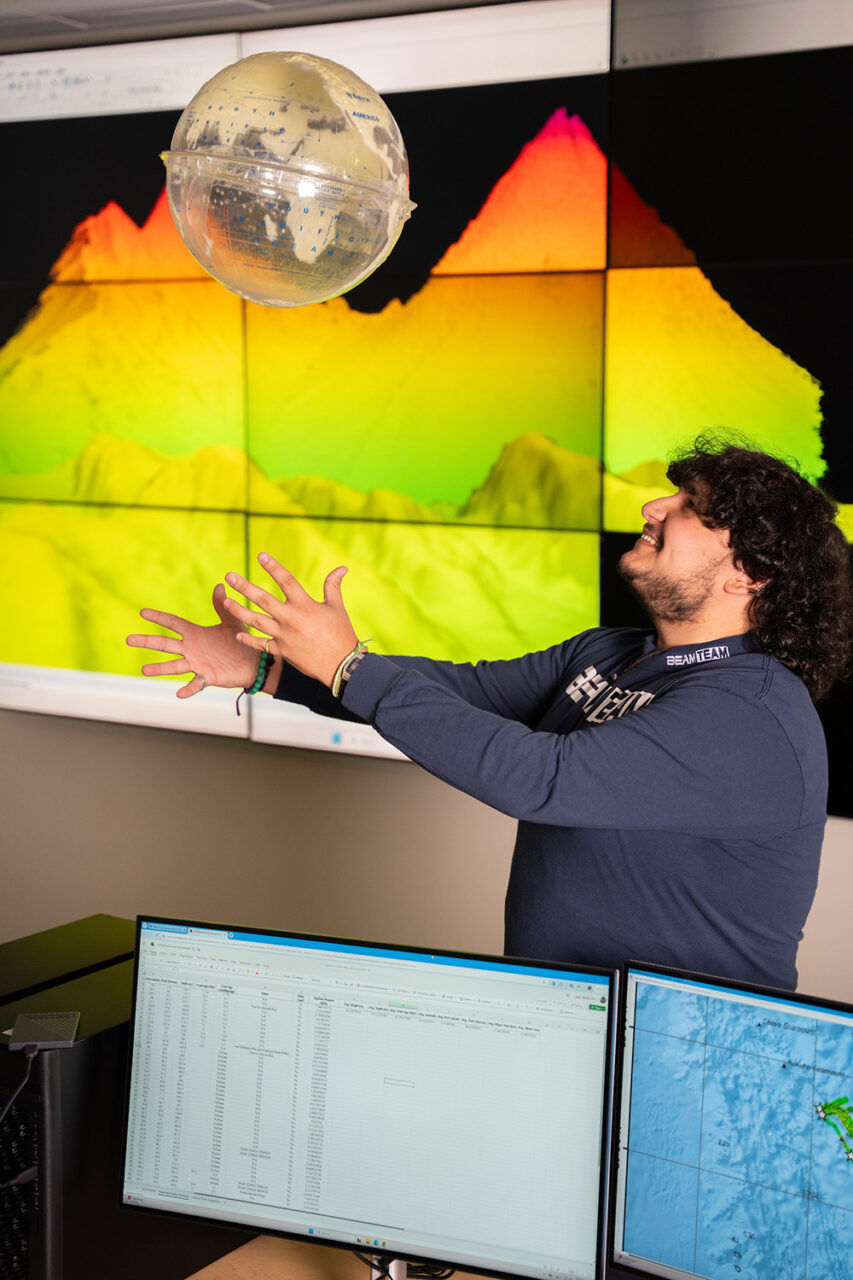
A perk of the project was conducting research on a National Oceanic and Atmospheric Administration (NOAA) ship.
NOAA coordinated a training cruise for students at several different academic institutions to help them learn about the acquisition of hydrographic data. Sarlo and other students were taught how to plan, execute and troubleshoot hydrographic surveys. They helped collect and process 487 square nautical miles of bathymetric data, about the equivalent of 9,863 football fields.
“I went on a five-day trip on the NOAA vessel Nancy Foster,” says Sarlo. “We were surveying the seafloor about 100 nautical miles off the coast of South Carolina, in hopes of finding deep-sea corals.”
He says it was one of the best things he’s had the opportunity to do.
“On top of learning so many skills and working on one of the coolest boats in the NOAA fleet, I made lifelong connections with students from around the country that I will cherish for the rest of my life,” Sarlo says. “I would deeply encourage any student who can get this opportunity to fight tooth and nail for it.
“It was one of the most valuable things I have done during my academic career, with the bonus of friends and memories for the rest of my life,” he adds. “And, yes, we did end up finding deep-sea corals!”
Depths of Gratitude
All in all, Sarlo is deeply grateful to the College and to those who’ve helped him along the way, for making the opportunities he has had possible.
“Professor Cabaniss has been challenging in the best way possible,” he says, adding that he will continue to work with Cabaniss throughout his senior year. “She’s incredibly experienced in this field and treats you as an equal. She truly wants what’s best for you, and she makes that clear.”
Also wanting what’s best for Sarlo is his mother.
“My mother has been an inspiration to me and taught me early on how important it is to give back, he says. “The scholarships I received have helped me get to this point, and I hope to do the same for future students.”

